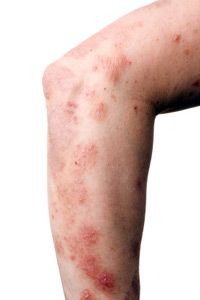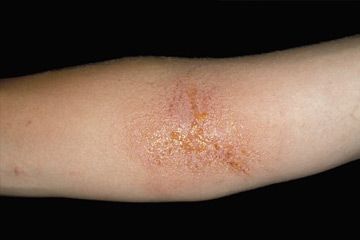The name "nummular dermatitis" may seem like a mouthful of a medical condition. With a name like that, it may sound like a rare, complex disease, but it's actually a form of dermatitis, one of the most common skin conditions. Nummular dermatitis, also known as nummular eczema, is a condition that causes itchy, red oval- or coin-shaped lesions to form on the skin, usually on the legs, arms, feet, hands and torso.
Nummular dermatitis affects about two in every 1,000 people, and it's more common in men than in women. The first outbreak usually occurs between the ages of 55 and 65, but in rare cases, the condition can develop between the ages of 15 and 25 [source: Miller]. Nummular dermatitis is very rare in children.
Advertisement
The exact cause of the condition is unknown, but there are many factors that seem to increase the risk of developing nummular dermatitis, including:
- A history of dry skin
- Cold, low-humidity environments
- Certain medications
- Skin irritations, such as mosquito bites, burns, skin infections or abrasions
Heightened sensitivity to certain substances, including rubber, nickel, formaldehyde and mercury, may also play a role in triggering an outbreak. Nummular dermatitis isn't caused by food allergies, and the condition isn't genetic [source: American Academy of Dermatology].
Although the exact cause of nummular dermatitis is unknown, its diagnosis is usually straightforward. Typically, a dermatologist will visually examine the skin and, if necessary, take a small biopsy. If this isn't enough to make a diagnosis, or if the dermatologist thinks that allergies may be the cause, patch testing, a method of testing the skin for allergies, may be used [source: American Academy of Dermatology].
But how do you know if you should be tested for nummular dermatitis? Read on to learn more about its symptoms.
Advertisement

